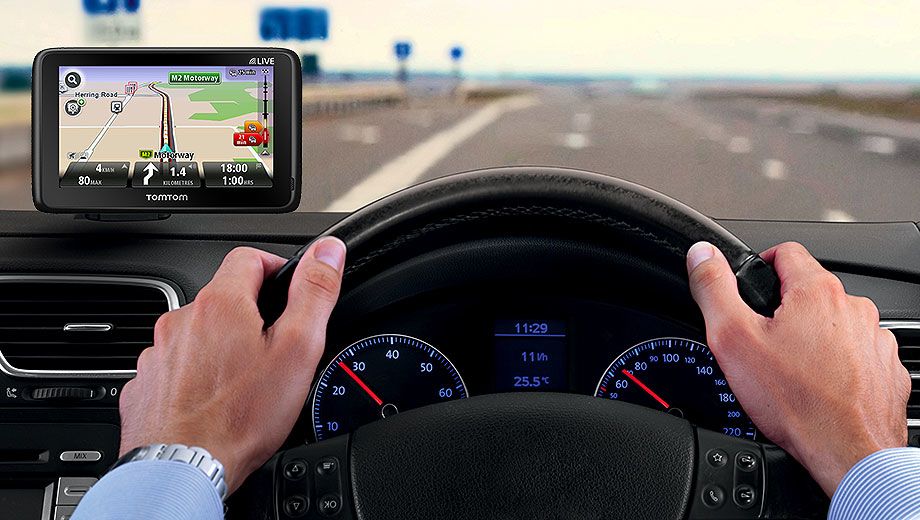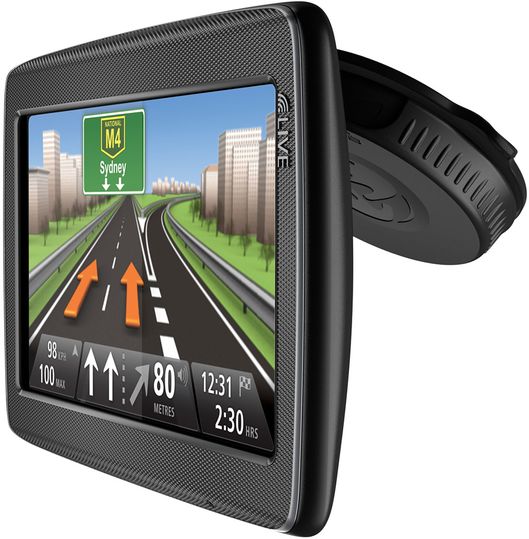TomTom's new "HD Traffic" system steers you round traffic jams

If you're on the road for business, driving to the airport under pressure of time, or simply doing your daily commute, there's nothing more annoying than getting stuck in traffic.
However, the technology available to help drivers avoid traffic jams has been fairly crude to date.
There's the option of listening to radio traffic reports, or buying a GPS navigator with the "SUNA" service built in, which relies on FM radio coverage (only available in cities and surrounds, not in most rural areas) and often needs an unwieldy antenna strung up on the windscreen.
SUNA is also limited to metropolitan areas, which means that drivers still get stuck on constricted regional roads where roadworks are occurring, or there just aren't enough lanes to carry the routine traffic.
Even in the city, SUNA can only provide traffic congestion information based on a fairly broad grid of point on the map -- if there's a blockage only on a small part of a road, SUNA may report traffic congestion on a whole city block.
TomTom's new "HD Traffic" technology
TomTom has dropped the SUNA system and launched its own traffic congestion avoidance system using technology based on monitoring the movement of hundreds of commercial trucks, vans and cars all over Australia (think: delivery trucks and taxis).
The new TomTom Go Live range of navigators has a mobile network connection built in that downloads national traffic updates every two minutes. The SIM card is built into the TomTom and the data plan is arranged and paid for by TomTom -- you never need to deal with a telco.
The navigators can be set to automatically re-route drivers if a traffic delay is detected on the route ahead.
In the image below, a 14 minute delay is shown on a motorway ahead. Depending on how you set the preferences in the TomTom, it can either ignore that, ask you whether you want to reroute to a faster route, or just automatically reroute whenever it detects traffic ahead.
TomTom Australia is doing its traffic monitoring differently to other TomTom countries, where the movement of people's mobile phones is monitored and used as an indicator of how fast traffic is moving.
"That technique has a lot of 'noise' associated with it," explained TomTom Asia Pacific Vice President Chris Kearney to Australian Business Traveller. "There are all the people sitting in offices stationary with their mobile phones; groups of people on buses, and so on. It's not necessarily the easiest way to get accurate information on traffic movement."
"We have opted instead to take data from the movement of hundreds of commercial vehicles fitted with positioning systems that are constantly on the road all over Australia," he said.
"As a result, we can provide nationwide coverage, including in regional areas, not just main city areas."
"We don't claim that it will catch 100 per cent of traffic delays, but it's very good -- we have been developing it for several years, and the system has been in full operational testing for the last six months."
Google built in, too
Because the TomTom has a mobile network modem in it, it also allows Google searches for addresses, providing a vastly improved "points of interest" database compared to the rather spotty one previously provided by Telstra's Sensis division.
(In case you're wondering, it is limited to Google -- it's not a web browser, just a Google Places search function.)
GPS QuickFix over the air
The new TomTom navigators will now download satellite positioning information automatically over the mobile network, without requiring the navigator to be plugged in to a computer every week.
The GPS QuickFix allows the navigator to locate its position in just a few seconds, rather than taking a couple of minutes to scan through all the satellite radio frequencies to find the correct satellites.
Live traffic camera info
You can minimise your risk of being sprung by a mobile traffic camera using TomTom's new live speed camera alerts.
As reports of new speed cameras come in, the TomTom receives them over the air and will alert you to their location as you approach, just like a fixed camera alert.
Live traffic online
TomTom is also making the national live traffic info available on its website for anyone who wants a quick read on whether their route is likely to be congested, before they leave home or the office.
Traffic delays can be sorted by severity too -- it's like a radio traffic report customised to your location, available on demand any time.
If you're planning on travelling on a specific route you can find out what traffic there will be along the way.
You can click on any traffic event to get detailed information about it.
It's an easy web address to remember: tomtom.com/livetraffic.
A small bonus
All the "Live" TomTom models come with Bluetooth handsfree calling, with decent speakers and microphones, so you can make calls with better loudness and clarity than what's built into your mobile phone.
What the service costs
All new "Live"-branded TomToms come with a year's free access to the Live services.
After that, it's $69 per year to keep the information flowing in -- that's $5.75 a month, the cost of one and a half coffees each month, which we think is more than reasonable (either that, or coffees are becoming unreasonably priced).
The new TomTom models
TomTom GO LIVE 800 series
The Go Live 820 (pictured above) is the new $299 entry-level TomTom, with a permanently affixed slimline suction mount that folds back onto the back of the navigator.
It uses the slick new TomTom Series 3 software that was first debuted in the TomTom 1000 released in December last year.
However, it has a 4.3" resistive (pressure sensitive) touchscreen, unlike higher-end TomToms. In Australian Business Traveller's first-hand testing, the resistive touchscreen was still very responsive; don't let it put you off buying this model.
There's another model -- the 825 -- that has a 5" resistive touchscreen, but is otherwise equivalent.
The main downside of the 800 series is that it includes a traditional micro-USB connector, meaning every time you get into the car, you'll have to fiddle with getting the tiny connector into the port correctly.
TomTom GO LIVE 2000 Series
The TomTom Go Live 2050, pictured above, has a large 5" glass capacitive touch-screen that responds to the electrical field of your finger, rather than pressure (much like an iPhone display).
It also has larger speakers than the 800 series, giving the loudest audio for spoken navigation instructions and handsfree calling.
The $399 TomTom Go Live 2050 model provides pinch-and-zoom viewing of maps (though in Australian Business Traveller's experience, this isn't a feature that one tends to use much in a navigator.)
The $499 Go Live 2050 World edition includes all maps of Australia, New Zealand, Europe and North America, allowing navigation across 49 countries for an additional $100 over the standard 2050 model.
Both of the 2000 series navigators have the new TomTom Easy Click Magnetic Mount, which provides magnetic mounting for the navigator, allowing you to slot it into its dock without having to fiddle with cables.
There are also semi-permanent mounts available from Proclip USA which slot into cracks between panels of your dashboard, and allow the magnetic TomTom mount to be left in place all the time, away from the windscreen.







Hi Guest, join in the discussion on TomTom's new "HD Traffic" system steers you round traffic jams